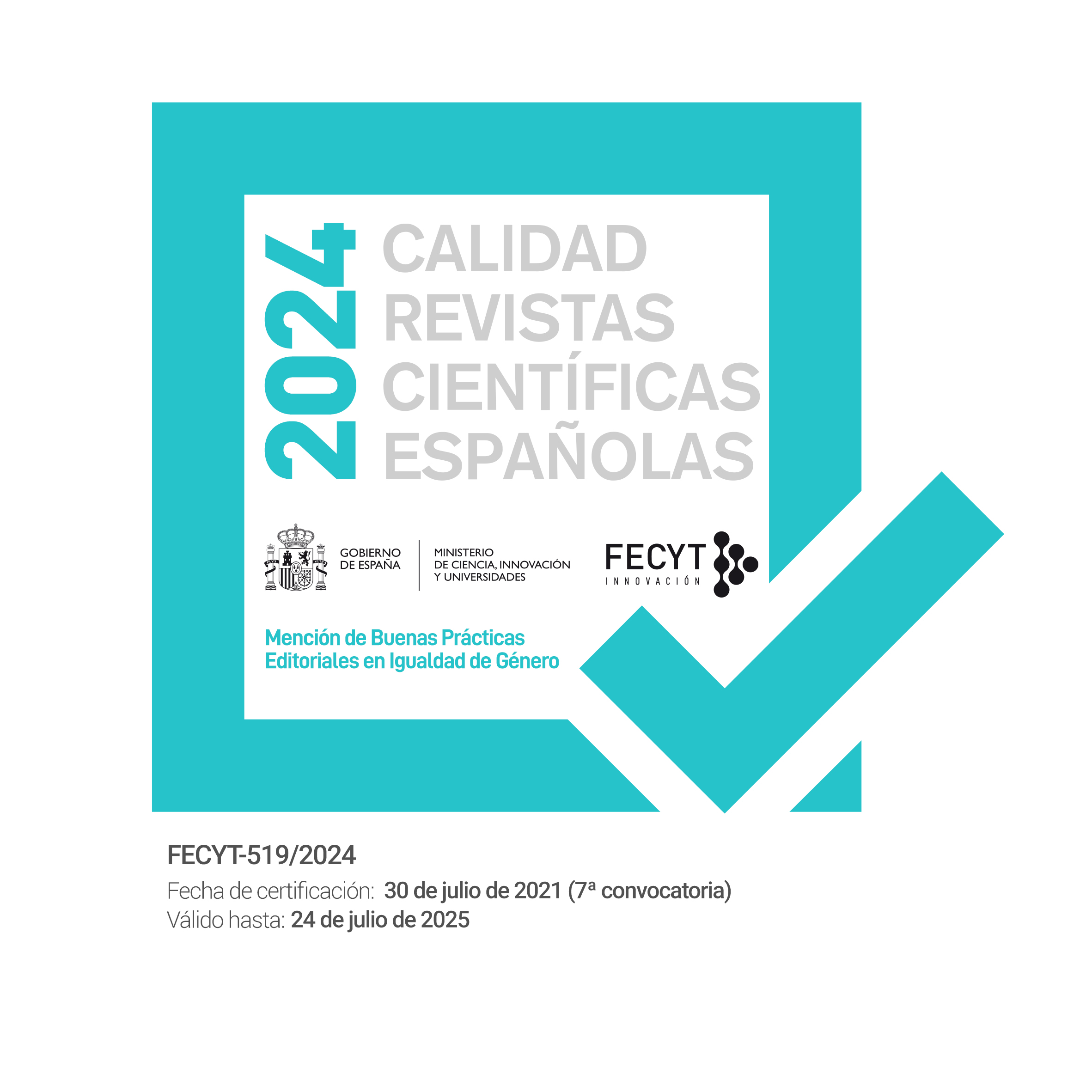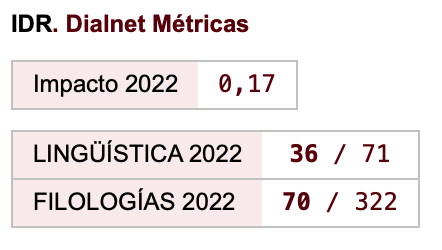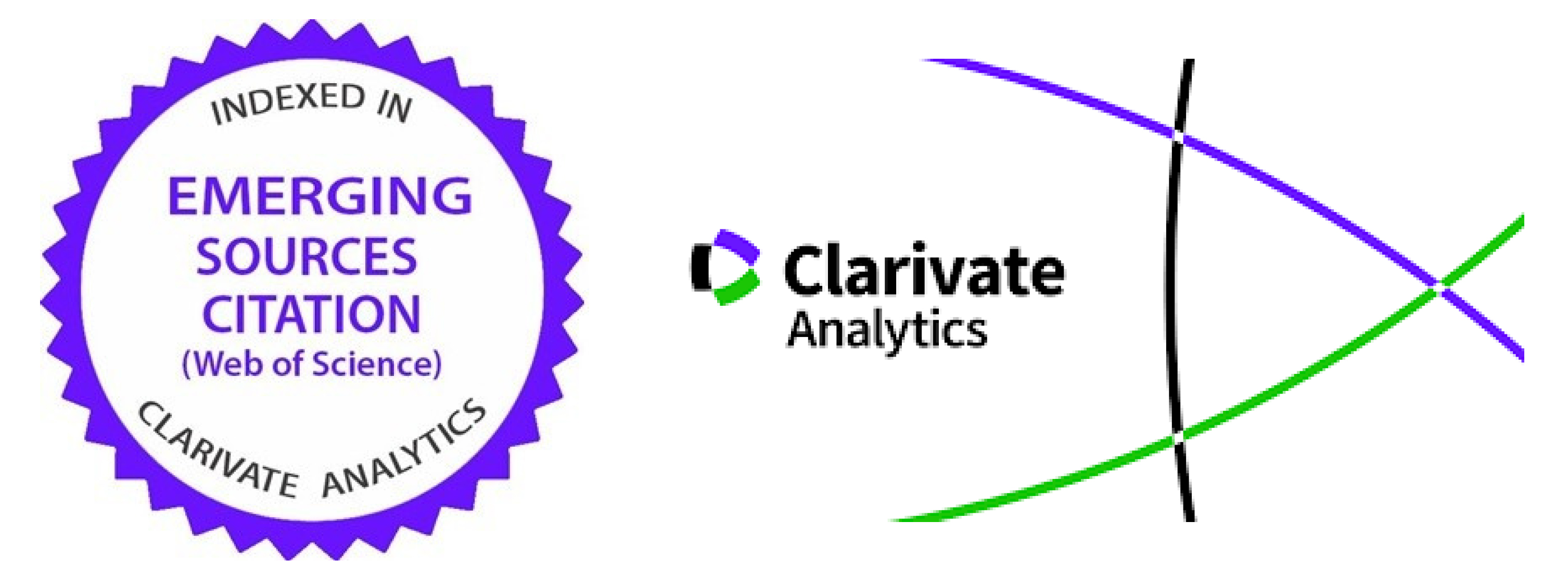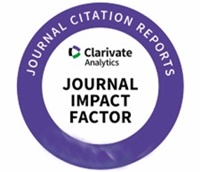Medical case reports and titleology: A diachronic perspective (1840-2009)
Keywords:
medicine, case reports, titles, diachrony, BMJ, BMJ Case ReportsAbstract
This paper is a diachronic analysis of a corpus of 180 titles drawn from CRs published in the BMJ and the BMJ Case Reports between 1840 and 2009. The frequency of occurrence of 69 variables (e.g. title type and length, punctuation, grammatical and syntactic data, number of authors and collaboration practices) was recorded for each title. The corpus was divided into three blocks (1840-1850, 1920-1930 and 2009) and between-block comparisons were carried out. Our findings show that CR titles have evolved over the 160-year period studied in the sense that they have increased in length, syntactic complexity, semantic richness and title type diversity. Authorship patterns and collaboration practices have changed, too. Although internationalization of case reporting has increased over time, today’s preferred practice is still local collaboration. The only variable that has remained constant over the years is the nominal nature of CR titles. We put forth several social and scientific factors that could account for the various shifts observed. The non-informativeness of CR titles that persisted over time can be explained by the fact that CR authors are reluctant to give a generalization flavor to their findings based on single cases.
**********
ERRATUM
In this article, an error was subsequently identified in Footnote 1. This error concerns acknowledgement of funding information. The corrected text is now included beow:
1 This research was supported by Grant N° M-1039-13-06-B from the University of The Andes Research Center.
Correction added on 23 February 2015, after online publication in November, 2013.
Downloads
References
Anthony, L. (2001). Characteristic features of research article titles in computer science. IEEE Transactions of Professional Communication, 44(3), 187-194.
Atkinson, D. (1992). The evolution of medical research writing from 1735 to 1985: The case of The Edinburgh Medical Journal. Applied Linguistics, 13, 337-374.
Berkenkotter, C, & Huckin, T. (1995). Genre knowledge in disciplinary communication. Hillsdale, NJ: Lawrence Erlbaum.
Biacchi, A. (2003). Relation complexity of titles and texts: A semiotic taxonomy. In L. Merlini Barbaresi (Ed.), Complexity in language and text (pp. 319-341). Pisa: PLUS.
Busch-Lauer, I. (2000). Titles in English and German research papers in medicine and linguistics. In A. Trosborg (Ed.), Analysing professional genres (pp. 77-97). Amsterdam: John Benjamins.
Castells, M. (2000). The rise of the network society. Oxford: Blackwell.
Cronin, B. (2002). Hyper-authorship: a postmodern perversion or evidence of a structural shift in scholarly communication practices? Journal of the American Society for Information Science and Technology, 2(7), 558-569.
Cronin, B. (2005). The hand of science. Academic writing and its rewards. Lanham, D: Scarecrow Press.
Cronin, B. (2012). Collaboration in art and in science: Approaches to attribution, authorship and acknowledgment. Information and Culture, 47(1), 18-37.
Cronin, B., Shaw, D., & La Barre, K. (2003). A cast of thousand. Co-authorship and sub-authorship collaboration in the twentieth century as manifested in the scholarly literature of psychology and philosophy. Journal of the American Society for Science and Technology, 54(9), 855-871.
Day, R. A. (1995). How to write and publish a scientific paper. Cambridge: Cambridge University Press.
Dietz, G. (2001). The pragmatics of scientific titles formulated as questions. Metalinguistica, 9, 19-35.
Fischer, B. A, & Zigmond, M. J. (2004). Components of a research article. 0009www.survival.pitt.edu/library/documents/ComponentsofaResearchArticle.pdf. Accessed 07/01/2009.
Goodman, N. W. (2000). Survey of active verbs in the titles of clinical trials reports. British Medical Journal, 320, 914-915.
Goodman, N. W. (2010). Novel tool constitute a paradigm: How title words in medical journal articles have changed since 1970. The Write Stuff, 19(4), 269-271.
Goodman, N. W. (2011). Fashion in medicine and language: Inferences from titles and abstracts of articles listed in PubMed. The Write Stuff, 20(1), 39-42.
Goodman, R. A., Thacker, S. B., & Siegel, P. Z. (2001). What’s in a title? A descriptive study of article titles in peer reviewed medical journals. Science Editor, 24(3), 75-78.
Haggan, M. (2004). Research paper titles in literature, linguistics and science: Dimensions of attraction. Journal of Pragmatics, 36, 293-317.
Hartley. J. (2007). Planning that title: Practices and preferences for titles with colons in academic articles. Library and Information Science Research, 29, 553-568.
Hartley, J. (2008). Academic writing and publishing: A practical handbook. Abingdon: Routledge.
Haynes, R. B., McKibbon, K. A., Walker, C. J., Fitzgerald, N., & Ramsden, M. F. (1990). Online access to MEDLINE in clinical settings. Annals of Internal Medicine, 112, 78-84.
Jaime-Sisó, M. (2009). Titles or headlines? Anticipating conclusions in biomedical research article titles as a persuasive journalistic strategy to attract busy readers. Miscelánea. A Journal of English and American Studies, 39, 29-54.
Laband, D. N, & Tollison, R. D. (2000). Intellectual collaboration. Journal of Political Economy, 108(3), 632-662.
Lewinson, G., & Hartley, J. (2005). What’s in a title? Number of words and the presence of colons. Scientometrics, 63(2), 41-356.
Maisonneuve, H., Lorette, G., Maruani, A., & Huguier, M. (2010). La rédaction médicale. Paris: Doin editeurs.
McGowan, J., & Tugwell, P. (2005). Informative titles described article content. Journal of the Canadian Health Libraries Association, 26, 83-84.
Nobert, M. (1983). Le titre comme séduction dans le roman Harlequin: Une lecture sociosémiotique. Études littéraires, 16(3), 379-398.
Rosner, J. Reflections on science as a product. Nature 1990:345:108.
Roy, M. (2008). Du titre littéraire et de ses effets de lecture. Protée, 36(3), 47.
Salager-Meyer, F. (1984). Compound nominal phrases in scientific technical writings: Proportion and rationale. In A. K. Pugh & J. M. Ulijn (Eds.), Reading in a foreign language: Studies in native and foreign languages (pp. 136-146). London: Heinemann.
Salager-Meyer, F. (2012). The importance of medical case reports. European Science Editing, 38(2), 38-39.
Smith, R. (2000). Informative titles in the BMJ. British Medical Journal, 320, 915.
Soler, V. (2007). Writing titles in science: An exploratory study. English for Specific Purposes, 26(1), 90-102. Soler, V. (2009). Títulos científicos en lengua española: Estudio exploratorio. Lebende Sprachen, 2, 50-58.
Soler, V. (2011). Comparative and contrastive observations on scientific titles in written English and Spanish. English for Specific Purposes, 30, 124-137.
Sugimoto, C. R., & Cronin, B. (2012). Bio-bibliometric profiling: An examination of multi-faceted approaches to scholarship. Journal of the American Society for Information Science and Technology, 63(3), 450-468.
Swales, J. (1990). Genre analysis: English in academic and research settings. Cambridge: Cambridge University Press.
Swales, J., & Feak, C. B. (1994). Academic writing for graduate students. A course for nonnative speakers of English. Ann Arbor, MI: The University of Michigan Press.
Yakhontova, T. (2002). Titles of conference presentation abstracts: A cross-cultural perspective. In E. Ventola, C. Shalom & S. Thompson (Eds.), The language of conferencing (pp. 277-300). Frankfurt: Peter Lang.
Additional Files
Published
How to Cite
Issue
Section
License
Authors who publish with this journal agree to the following terms:
- Authors retain copyright and grant the journal right of first publication with the work simultaneously licensed under a Creative Commons Attribution License that allows others to share the work with an acknowledgement of the work's authorship and initial publication in this journal.
- Authors are able to enter into separate, additional contractual arrangements for the non-exclusive distribution of the journal's published version of the work (e.g., post it to an institutional repository or publish it in a book), with an acknowledgement of its initial publication in this journal.
- Authors are permitted and encouraged to post their work online (e.g., in institutional repositories or on their website) prior to and during the submission process, as it can lead to productive exchanges, as well as earlier and greater citation of published work (See The Effect of Open Access).

Revista de Lenguas para fines específicos is licensed under a Creative Commons Reconocimiento-NoComercial-SinObraDerivada 4.0 Internacional License.























